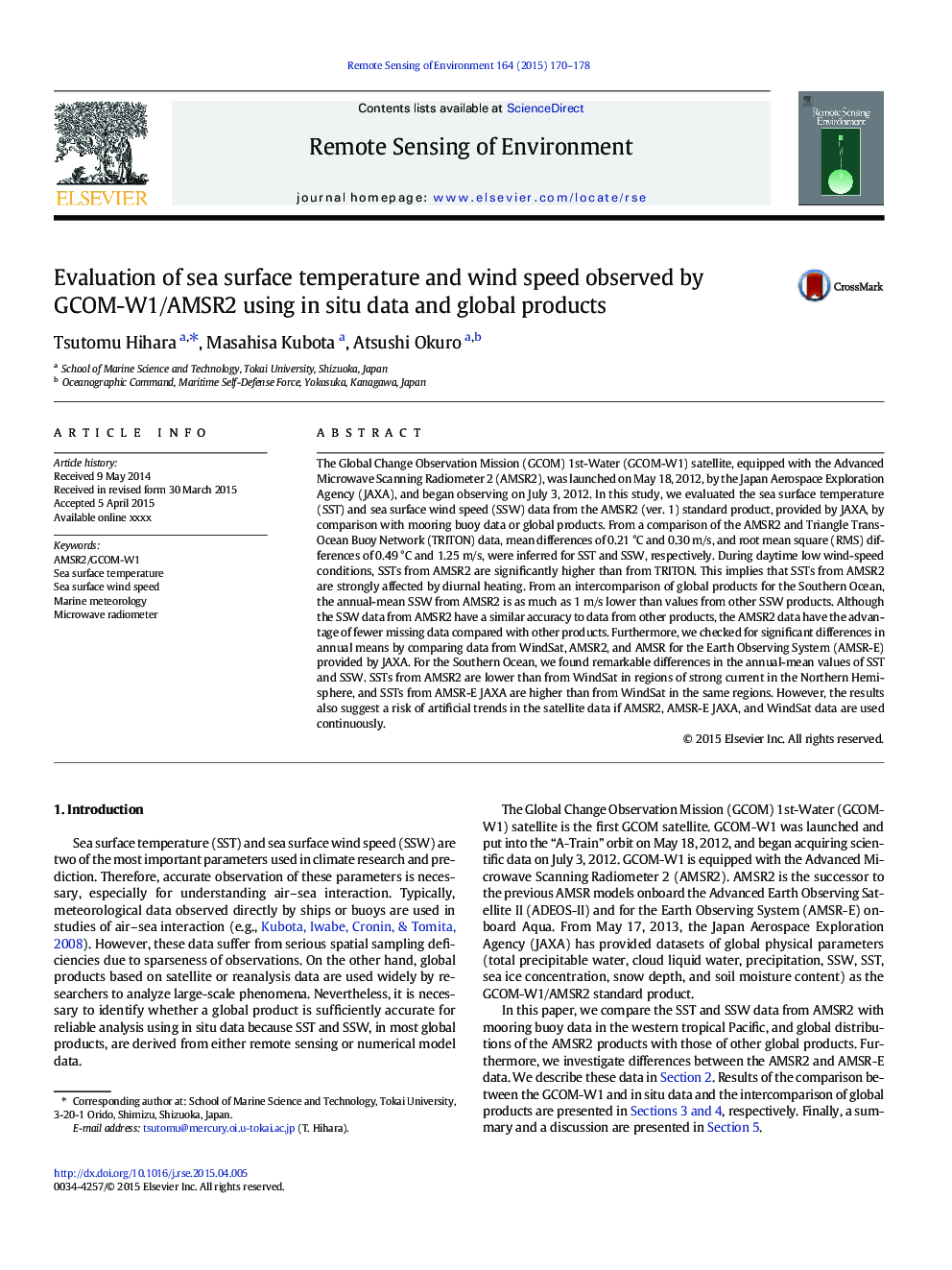| کد مقاله | کد نشریه | سال انتشار | مقاله انگلیسی | نسخه تمام متن |
|---|---|---|---|---|
| 6346026 | 1621236 | 2015 | 9 صفحه PDF | دانلود رایگان |
عنوان انگلیسی مقاله ISI
Evaluation of sea surface temperature and wind speed observed by GCOM-W1/AMSR2 using in situ data and global products
دانلود مقاله + سفارش ترجمه
دانلود مقاله ISI انگلیسی
رایگان برای ایرانیان
موضوعات مرتبط
مهندسی و علوم پایه
علوم زمین و سیارات
کامپیوتر در علوم زمین
پیش نمایش صفحه اول مقاله

چکیده انگلیسی
The Global Change Observation Mission (GCOM) 1st-Water (GCOM-W1) satellite, equipped with the Advanced Microwave Scanning Radiometer 2 (AMSR2), was launched on May 18, 2012, by the Japan Aerospace Exploration Agency (JAXA), and began observing on July 3, 2012. In this study, we evaluated the sea surface temperature (SST) and sea surface wind speed (SSW) data from the AMSR2 (ver. 1) standard product, provided by JAXA, by comparison with mooring buoy data or global products. From a comparison of the AMSR2 and Triangle Trans-Ocean Buoy Network (TRITON) data, mean differences of 0.21 °C and 0.30 m/s, and root mean square (RMS) differences of 0.49 °C and 1.25 m/s, were inferred for SST and SSW, respectively. During daytime low wind-speed conditions, SSTs from AMSR2 are significantly higher than from TRITON. This implies that SSTs from AMSR2 are strongly affected by diurnal heating. From an intercomparison of global products for the Southern Ocean, the annual-mean SSW from AMSR2 is as much as 1 m/s lower than values from other SSW products. Although the SSW data from AMSR2 have a similar accuracy to data from other products, the AMSR2 data have the advantage of fewer missing data compared with other products. Furthermore, we checked for significant differences in annual means by comparing data from WindSat, AMSR2, and AMSR for the Earth Observing System (AMSR-E) provided by JAXA. For the Southern Ocean, we found remarkable differences in the annual-mean values of SST and SSW. SSTs from AMSR2 are lower than from WindSat in regions of strong current in the Northern Hemisphere, and SSTs from AMSR-E JAXA are higher than from WindSat in the same regions. However, the results also suggest a risk of artificial trends in the satellite data if AMSR2, AMSR-E JAXA, and WindSat data are used continuously.
ناشر
Database: Elsevier - ScienceDirect (ساینس دایرکت)
Journal: Remote Sensing of Environment - Volume 164, July 2015, Pages 170-178
Journal: Remote Sensing of Environment - Volume 164, July 2015, Pages 170-178
نویسندگان
Tsutomu Hihara, Masahisa Kubota, Atsushi Okuro,